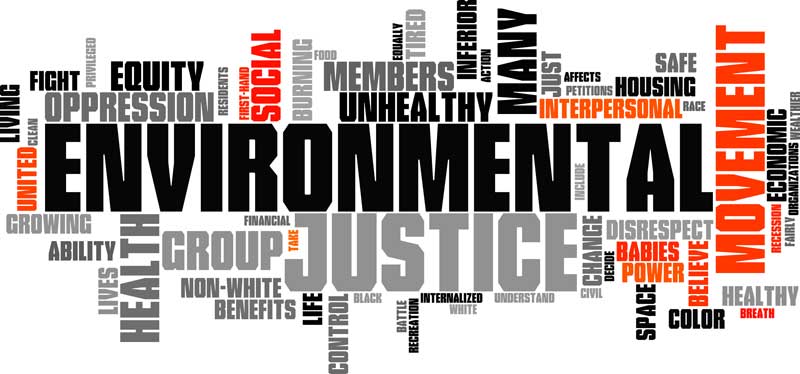WASTE & RACE:
The Impact of Environmental Racism on Vulnerable Communities
If you want to know how great your risk is to environmental hazards, look no further than your zip code. It is an unfortunate and well documented fact that people who live in low-income, rural, minority, working class, or ethnic communities are disproportionately victimized by industries that pollute the air they breathe and the water they drink. For the past twenty years, environmental and civil rights advocates having been fighting an uphill battle against this institutionalized problem appropriately referred to environmental racism.
In 1987, the United Church of Christ’s (UCC) Commission for Racial Justice published a report called the Toxic Waste and Race in the United States. What the commission found was shocking. Race, more than any other factor, was the most important predictor of a toxic site’s location.
 However, the problems with non-white communities and pollutants date back further than the UCC report. One of the earliest documented violations took place in Warren County, North Carolina in 1973. It was here Ward Transformers Company dumped over 30,000 pounds of a toxic chemical called polychlorinated biphenyl (PCB). The waste was spread across 14 counties and ran for over 200 miles. Later, the State of North Carolina chose a landfill site for the Ward Company – the town of Shocca, a poor and majority African American town. The Shocca community would spend the next several years fighting the landfill location, but would ultimately lose. The landfill was created and by 1983 the toxic PCB waste had contaminated the water.
However, the problems with non-white communities and pollutants date back further than the UCC report. One of the earliest documented violations took place in Warren County, North Carolina in 1973. It was here Ward Transformers Company dumped over 30,000 pounds of a toxic chemical called polychlorinated biphenyl (PCB). The waste was spread across 14 counties and ran for over 200 miles. Later, the State of North Carolina chose a landfill site for the Ward Company – the town of Shocca, a poor and majority African American town. The Shocca community would spend the next several years fighting the landfill location, but would ultimately lose. The landfill was created and by 1983 the toxic PCB waste had contaminated the water.
This happened in the shadow of the Environmental Protection Agency’s press release in 1979 citing that PCB’s caused birth defects and cancer and announcing an official ban of the chemical’s use.
A working class white community suffered a similar fate when it discovered that it’s dream property rested on an older, makeshift landfill. In mid-1950’s the Hooker Chemical Company capped its 20,000 plus tons of toxic waste and sold the land to the Niagara Falls School Board for one dollar. The school board then built the Love Canal community on the site. By the 1970s, decades of chemicals leeching into the water supply had resulted in a record number of miscarriages and infant birth defects. Eventually nearly 300 families had to be relocated and President Carter was forced to declare a state of emergency for the Love Canal community – the first state of emergency not caused by a natural disaster.
Though these events were unconscionable and preventable, one positive result was the emergence of a key legislative act called the Comprehensive Environmental Response, Compensation, and Liability Act (CERLA) also known as the Superfund Act of 1980. This act identifies sites that have been contaminated by hazardous waste and pose a health risk to humans, the environment, or both. The Act also manages the clean-up of the sites and dictates responses to local and national environmental emergencies.
Unfortunately, the Act came too late to help communities like Warren County. It was not until 2015 that the waste dumped by Ward was removed – a near 500,000 tons of PCB laden, cancer-causing soil.
To make matters worse, a follow-up report conducted by the UCC’s commission revealed that race is still the major factor in determining the future locations of toxic waste facilities.
The fight for environmental justice is not new or over. Currently, a new wave of passionate and dedicated activists has risen demanding a universal ethic and application to environmental protections. The need for a healthy, non-toxic environment transcends race, ethnicity, and class. It is the enforcement of the basic rights to breath fresh air and drink clean water that lays at the heart of all environmental justice work and this work must continue until this right is realized for all people.
One Voice is engaged in environmental justice work in the rural areas of Mississippi with the Electric Cooperative Leadership Institute (ECLI). One of the goals of ECLI is to empower electric cooperative communities by educating member-owners about their rights, roles, and responsibilities. Through sharing this information member-owners will be able to better direct policy decisions affecting their community’s economic security and growth.

